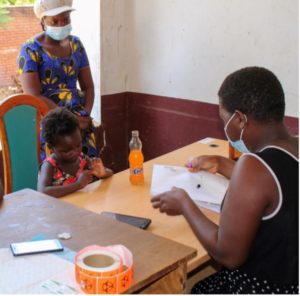This post is the second in a series of posts about the Malawi Family Planning Study. Details about the intervention can be found in the first post.
Each year, roughly 14 million unwanted pregnancies occur in Sub-Saharan Africa. While many of these pregnancies will be terminated, those that are carried to term will leave women and couples with a child that was unplanned, and they may be unprepared to raise. As raising a child is costly, the high rate of unwanted pregnancies may influence how limited household resources are allocated among children, having potentially deleterious effects on children’s growth and development.

The high rates of unwanted pregnancies within Sub-Saharan Africa may be reflective of poor access to family planning and reproductive health (FP/RH) services throughout the region. Despite recent advances, contraceptive use in Sub-Saharan Africa is still less than half as prevalent as it is in South Asia, and less than a third as prevalent as in East Asia. With this in mind, one may expect programs that improve access to contraceptives and knowledge of their use to reduce unwanted births and, in turn, improve child health outcomes.
In a new working paper, we study the relationship between improved access to contraceptives and knowledge and improved child health outcomes. Motivated by recent extensions to Becker’s classical model of fertility that introduce uncertainty into the “quality-quantity” choice, we assess the impact of improved access to family planning services on child health and human capital attainment. The study focused on a Randomized Control Trial (RCT) conducted in Lilongwe, Malawi between November 2016 and February 2019 that improved pregnant and postpartum women’s access to FP/RH services. The trial offered women assigned to the treatment arm with six free family planning counseling sessions, free transport to a high-quality FP/RH clinic, and reimbursement for family planning methods of their choice. In a previous post, we found contraceptive use increased among women assigned to the treatment group and that these women were less likely to have a second pregnancy in the two years after the intervention was initiated.
One year after the intervention began, we observe that “index” children born to mothers in our treatment group are 0.26 standard deviations taller for their age than children born to mothers in the control group (see Figure 1). While for reasons unrelated to the study, we were unable to include anthropometric measurement in the 2-year follow-up survey, we were able to include a caregiver reported measure of children’s cognitive development. Using this tool, we find children preform 0.1 standard deviations better.

The results on children’s growth patterns are surprisingly large for an intervention that does not focus on child health directly. This creates a natural curiosity as to what is causing these improvements. Is it a biological pathway? Research on birth intervals has shown that child growth patterns are positively associated with the length of the preceding birth interval. However, since we focus on children conceived prior to the start of the intervention, it is unlikely that preceding birth intervals for these children were impacted (we show that they are not). Instead, the recent extensions to the “quality-quantity” model would suggest that by increasing women’s control over fertility, FP/RH services induce increased investments in child health and human capital. These investments likely take the form of improved feeding practices and health seeking on the part of couples.
While we did not collect data on feeding practices during our surveys, we do have data on healthcare usage among mothers. Using a causal mediation analysis, we show that a roughly 10 percentage point increase in the likelihood that the child and mother have visited a clinic in the last year can explain between 25 and 30 percent of the effects we find on both growth patterns and cognitive development. Although our results show that seeking healthcare explains a minority of the effects on child health and human capital, we believe this percentage would be larger if we had obtained more detailed data on healthcare usage.
While there is a large body of evidence that shows family planning services are effective at their stated goals (i.e., contraceptive use, birth spacing, etc.), there is a distinct lack of evidence on downstream outcomes such as women’s health and labor, and child health. The results we present in our new working paper should, of course, not be taken as concrete proof that family planning services will improve child health in all contexts. For numerous reasons, our results may not hold elsewhere. Our results are, however, cause for hope that family planning services have positive downstream impacts. These impacts may feed into the “demographic dividend” in which positive externalities from demographic transition, in this case human capital attainment, positively impact economic growth and national development.

